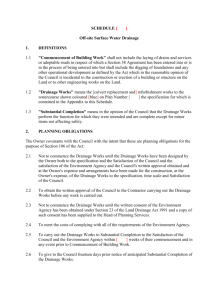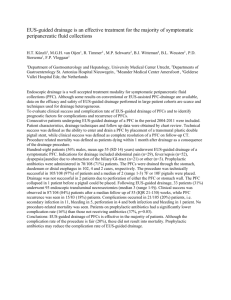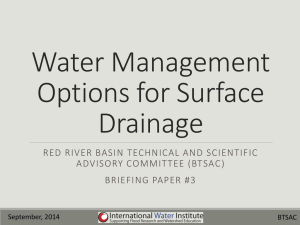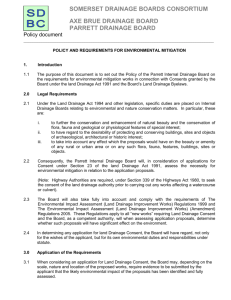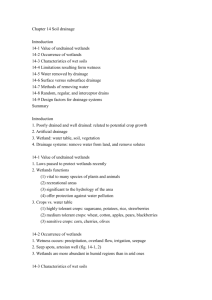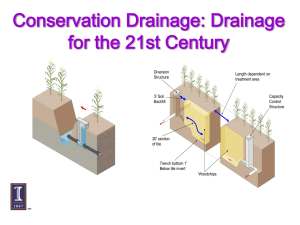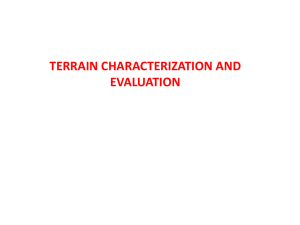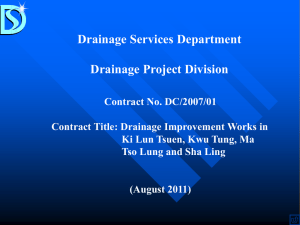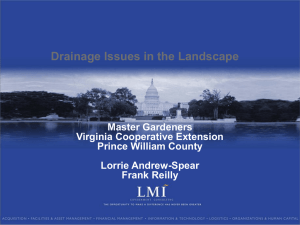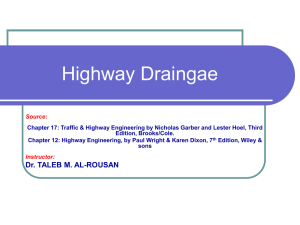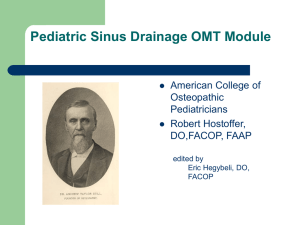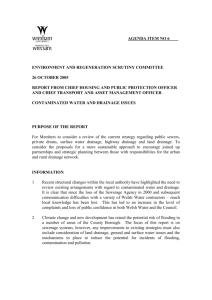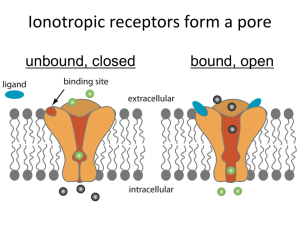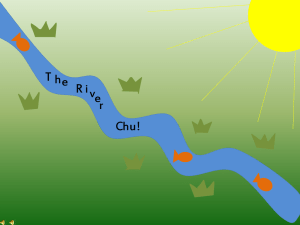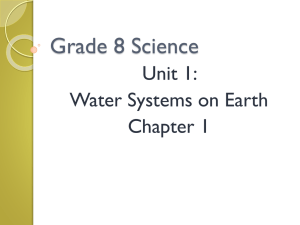SES_4
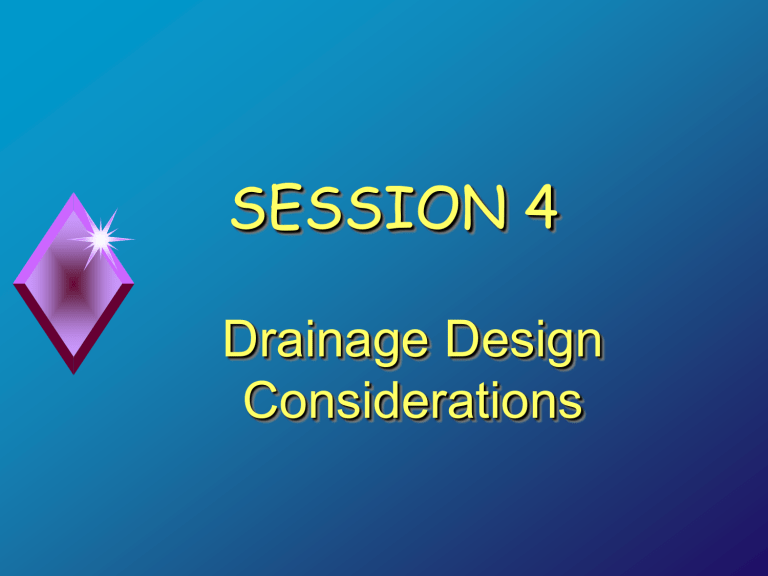
SESSION 4
Drainage Design
Considerations
Objectives
Identify types of subsurface drainage
Determine need for subsurface drainage
Recognize importance of maintenance
Identify surface drainage design factors
Introduction
Moisture is a major cause of distress
Drainage long recognized as key design consideration
Focus on drainage of surface infiltration water
Effect of Drainage
Moisture-Related
Distresses
Moisture-Related
Distresses
Moisture-Related
Distresses
Moisture-Related
Distresses
Approaches to Drainage
Problems
Seal the pavement
Use moisture-insensitive materials
Install subsurface drainage
Types of Subsurface
Drainage
Daylighted bases
Longitudinal edge drain system
Drainable pavement system
Daylighted
Traffic Lane
Agg. Base
Subgrade
Traffic Lane
Aggregate Base
Carried
Out to Ditchline
Aggregate Base
Carried
Out to Ditchline
Longitudinal Edge Drain
System
Inner Shoulder Traveled Way
PCC
Slope
Slope
PCCP PCCP
Outer Shoulder
Slope
PCC
TPM
Base (LCB, ACB)
Filter Fabric, High Side of
Tangents and Superelevations
California Design
Filter
Fabric
Example Drainable
Pavement System
AC
Shoulder
PCC Mainline
AC
Shoulder
Geotextile
Aggregate Separator
Layer Permeable
Base
Geotextile
Components of a Drainable
Pavement System
Permeable base
Separator layer
Longitudinal collector pipe
Permeable Base
Permeability of
300 to 3,000 m/day (1,000 to
10,000 ft/day)
100 to150 mm
(4 to 6 in) thick
Treated or untreated
Separator Layer
Prevent intrusion of fines into permeable base
Dense-graded aggregate
Geotextile
Longitudinal Collector Pipe
Collects water and outlets to ditches
Typically 100 to 150 mm (4 to 6 in) corrugated plastic pipe
Outlet spacing 76 to 150 m (250 to
500 ft)
Design and Analysis of
Drainage Systems
Define
Material properties
Roadway/pavement geometrics
Climatic data
Determine inflow/outflow characteristics
Determine drainage requirements
Consideration of Drainage in Slab Thickness Design
AASHTO Drainage Coefficient
Drainage , Thickness
Reduction in properties of paving materials
Determining Need for
Subsurface Drainage
Available free moisture
Material properties
Cross sectional design
Subgrade drainability
Traffic levels
NCHRP 1-32
Drainage Guidelines
ESALs,
WET CLIMATE
Weak Strong
DRY CLIMATE
Weak Strong millions Subgrade Subgrade Subgrade Subgrade
< 3.0
None
3.0 - 6.0 None/EDS None None None
> 6.0
EDS/DPS
EDS = Longitudinal Edge Drain System
DPS = Drainable Pavement System
Inclusion of
Subsurface Drainage
Local experience
Past performance
Cost effectiveness
Construction and maintenance practices
Maintenance of Drainage
Installations
Ensures functionality of drainage system
Often a “forgotten” maintenance item
Activities include:
Reference markers
Cleaning outlets
Flushing/rodding edge drains
Cleaning/reestablishing ditches
Periodic video inspection
Video Inspection of Edge
Drains
Crushed Pipe and Silt
Buildup
Unwanted Inhabitants
Surface Drainage
Considerations
Pavement cross slope (tangent section)
2% recommended
Shoulder cross slope
3% recommended
Ditches
Width: 0.9 to 1.2 m (3 to 4 ft)
Depth: 1.2 m (4 ft) beneath pavement
Grade: 1%
Summary
Moisture-related distresses
Subsurface drainage types
Determining need for subsurface drainage
Maintenance considerations
Surface drainage considerations
